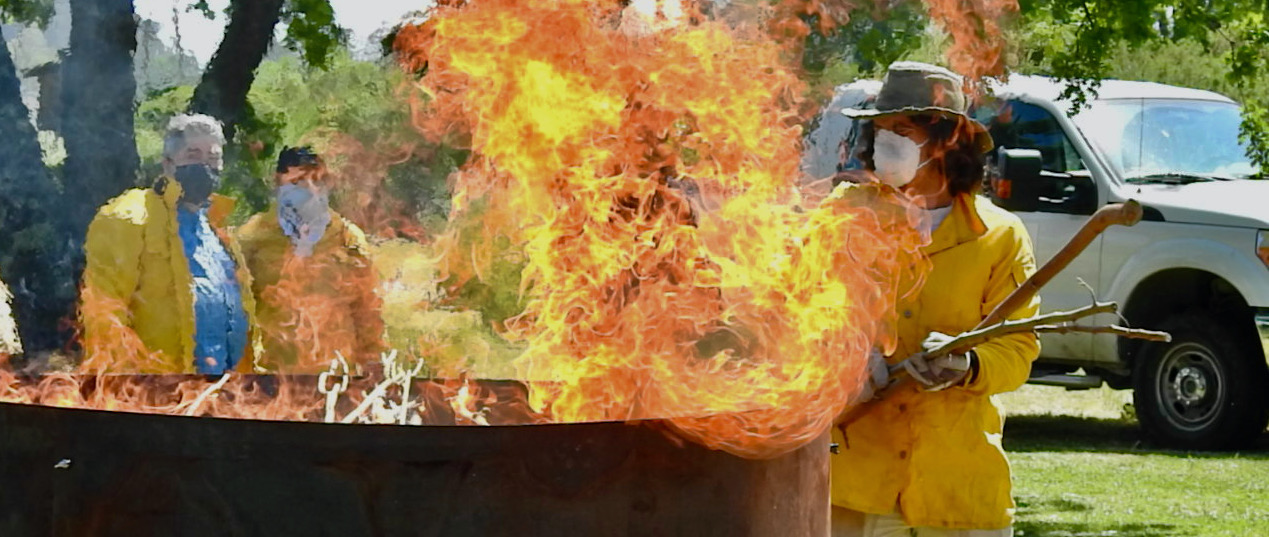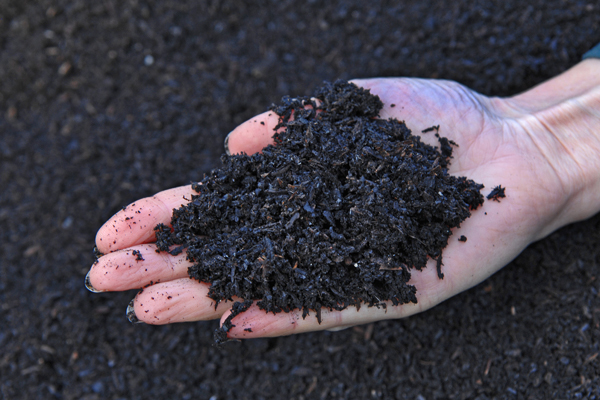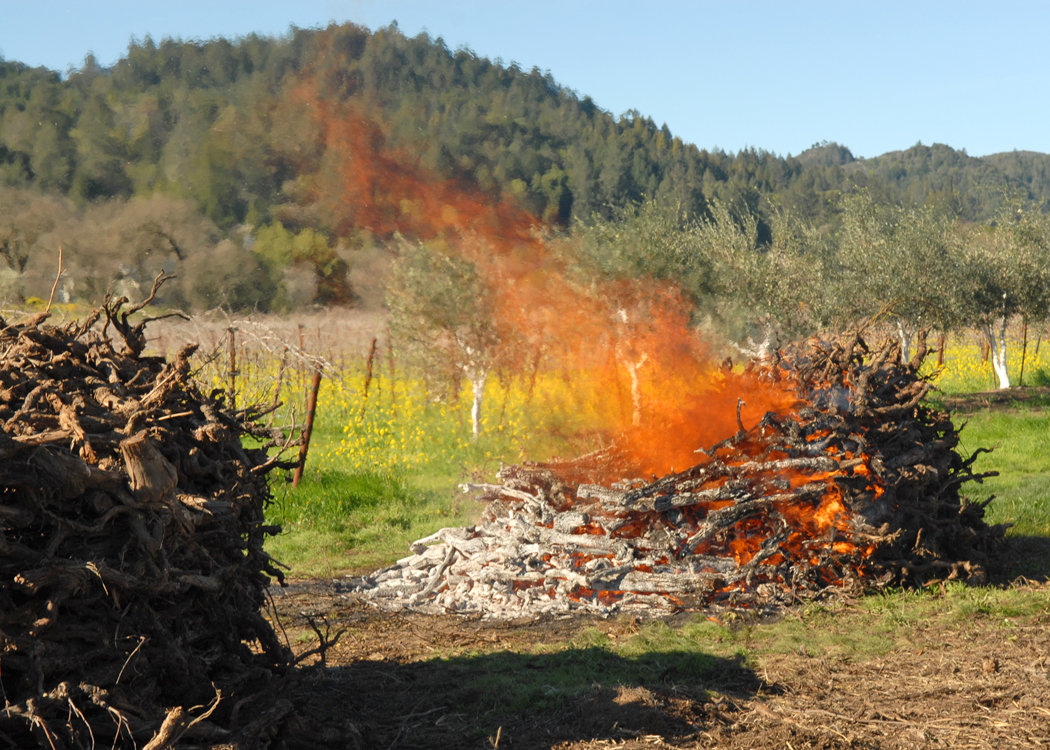Biochar

Biochar is a specialized form of charcoal that is produced by heating biomass using high heat (typically 350 C to 1000 C) in low-oxygen environments that is suitable for use in agriculture. Commonly used as a soil amendment (typically combined with compost), biochar increases soil health, conserves and stores nutrients and water, and in many cases increases agricultural crop yields. Biochar is also an important way to capture and store carbon.
Biochar has other environmentally beneficial uses, including stormwater filtration, as a feed supplement in dairy and poultry operations, and even as a beneficial additive in concrete production and construction materials.
When biomass is converted to biochar and added to soils it is turned into a very stable form of carbon that microorganisms cannot use for a food source, allowing it to degrade very slowly – trapping carbon in the process. As such, it is a form of carbon sequestration that can be implemented by anyone from a backyard vegetable gardener to the largest farm in California’s Central Valley. Currently biochar is in high demand for use as a carbon offset protocol on the European voluntary market, as most of it can last for centuries and is easily measured and verifiable. Biochar production and use is increasingly viewed as a natural climate solution by organizations including the Intergovernmental Panel on Climate Change (IPCC), the Nature Conservancy, The U.S. Natural Resources Conservation Service, and Lawrence Livermore National Lab.
Biochar is not a single type of material, but rather the catch-all name for a wide spectrum of carbonized biomass made from different feedstocks, at different temperatures, using processes called pyrolysis or gasification that also produce a variety of other valuable byproducts such as process heat, producer gases, and pyrolytic fluids such as wood vinegar.

Biochar increases soil health, conserves and stores nutrients and water, increases agricultural crop yields, helps stormwater filtration, works as a feed supplement, and even as a beneficial additive and construction materials.
Biochar has a unique physical structure, with thousands of tiny pores that hold the nutrients and water for the plants’ roots to access and enjoy. In many ways it’s akin to a coral reef in the ocean, acting as a natural attractant, sanctuary, and incubator by creating infrastructure for billions of organisms to thrive.
Field tests have shown that the worse the soil’s characteristics are when the biochar is added to it, the more positive the impact will be on crop yields.

Biochar is placed into the soil by farmers in their fields of crops, in orchards, in vineyards. The best time to apply it is with new plantings, however there are ways to add it using no-till nutrient application techniques in existing fields or orchards. Field tests have shown that the worse the soil’s characteristics are when the biochar is added to it, the more positive the impact will be on crop yields.
We strongly believe that biochar should be made ONLY from sustainably managed sources, which is critical from both an environmental and business perspective, and that when sourcing biomass from forest environments great care must be taken to preserve and minimize damage to forest ecosystems.
While some rapidly growing woody biomass materials, such as that produced by small-holder bamboo farms in developing countries, are certainly better than cutting slow-growing trees to produce biochar, we encourage agricultural models that move away from mono-cropping and that embrace increased biodiversity and regenerative techniques as the models of the future.
Biochar production is a regional activity and hauling biomass over long distances is not viable from an economic or an environmental standpoint. We support construction of regionally-located, biomass-to-biochar conversion centers organized by “carbonsheds” that determine appropriate feedstock sources and technology sizes and types based on site-specific situations. Just as with distributed energy generation, we need a distributed network of biochar and compost operations (preferably integrated) that utilize local “waste” streams and minimize transportation costs and GHG impacts.
Biochar mixed with compost makes a rich soil amendment for your farm, ranch or garden. Field tests have shown that the worse the soil’s characteristics are when the biochar is added to it, the more positive the impact will be on crop yields.
Once large volumes of biochar are available for commercial use, it can be used widely around the world by literally millions of farmers. In almost every country, biochar can be added economically to fields to increase resiliency to drought and increase production, in pasture land to improve grass production, to dairy operations to reduce odors, and improve animal health, and reduced the enteric methane produced during digestion. Cooperatives can be set up to share investment costs in conversion machines and/or simply teach low-polluting and low-investment biochar production techniques.
Farmers and ranchers are encouraged to “donate” their woody wastes to biochar production unit operators and receive in exchange not cash but biochar to further improve their operations and yields. The same truck that brings waste wood to production sites (assembly area) can be used to return bags of biochar to the same farmer. We have the tools currently to shift from patterns of “slash and burn” agriculture to “slash and char” instead.
